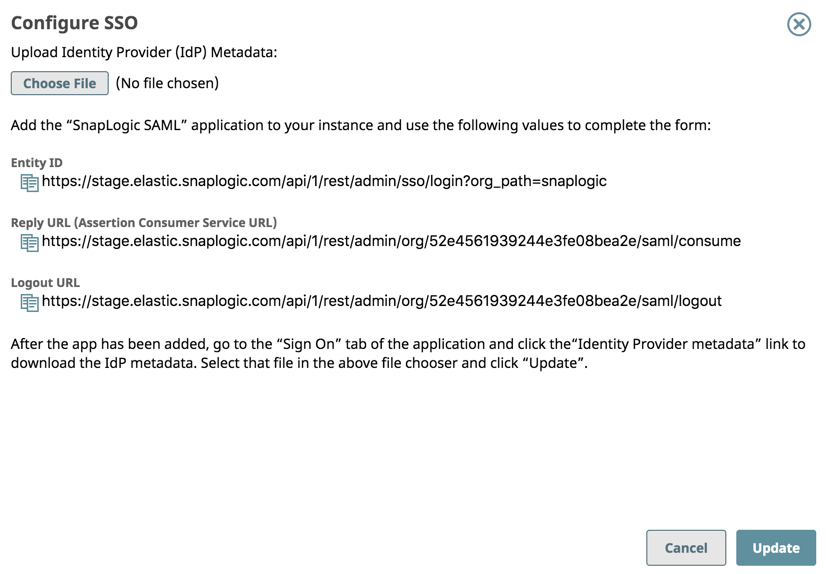On this page
...
Single Sign On is a convenient way for users to log into multiple services without needing to enter their username and password for each service. SnapLogic supports Single Sign On (SSO) through the Security Assertion Markup Language (SAML 2.0) standard. If you are using a SAML 2.0-2 compatible Identity Provider (IdP) to perform SAML authentication, you can configure your SnapLogic organization to authenticate users against your IdP. If you disable password-based login, users will have to use SSO. If you leave password-based login enabled, users can choose basic authentication or SSO to log in. You can use multiple IdPs, but only a single IdP can be configured per Org.
...
- Choose one of your SnapLogic Orgs to provide the metadata for the IdP Application Integration. It doesn't matter which Org you choose, however, any user who wants to use SSO to sign in must be a member of this Org.
- Log into that SnapLogic Org and do the following:
- Click Configure SSO. The dialog opens.
- Copy the Entity ID, Reply URL, and Logout URL to a text file. You will need them when creating your IdP application integration. Note that your IdP might use a different name for these URLs. For example, the SnapLogic Reply URL value goes into the Okta Single sign-on URL field.
- Click Configure SSO. The dialog opens.
- Log into the remaining SnapLogic Orgs and do the following:
- Click Configure SSO. The dialog opens.
- Copy the Reply URL to a text file that you created in Step 2b. Note that the Reply URL contains the Org ID, not the Org name.
- Log into your IdP and create one application integration for SnapLogic access:
- Provide the Entity ID, Reply URL, and Logout URL for the Org that you chose in step 1.
- Provide the Reply URLs that you copied in step 3b to the list of Reply URLs in the IdP’s application integration
- Export the metadata from the IdP application integration. In some IdPs, such as Okta, provide a URL instead of a download button. You can open the URL in a new browser tab to view and save the XML.
- Save the exported metadata on your machine to use when configuring your SnapLogic Orgs.
...
